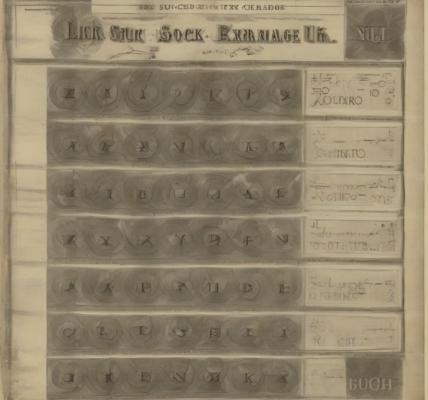Ad Exchange vs. Ad Network: Unveiling the Key Differences and Choosing the Right Platform for Your Advertising Needs
Ad Exchange vs. Ad Network: Unveiling the Key Differences and Choosing the Right Platform for Your Advertising Needs
In the dynamic world of online advertising, selecting the appropriate platform to reach your target audience is crucial. Two prominent options stand out: ad exchanges and ad networks. While both facilitate the buying and selling of digital advertising inventory, they differ significantly in their operational models, functionalities, and the overall advertising experience they offer. This comprehensive guide delves into the intricacies of ad exchanges and ad networks, highlighting their key distinctions to empower you to make an informed decision that aligns with your advertising objectives.
Understanding Ad Networks
Ad networks operate as intermediaries, connecting advertisers with publishers who have available ad inventory across various websites and applications. They function as a centralized platform aggregating ad space from numerous publishers, allowing advertisers to buy this inventory through a single interface. This simplifies the process for advertisers, eliminating the need to negotiate with individual publishers.
- Simplified Buying Process: Advertisers access a vast inventory through a single platform, streamlining the buying process.
- Targeted Advertising: Networks typically offer various targeting options, including demographic, geographic, and behavioral targeting, allowing for efficient ad placement.
- Guaranteed Inventory (Sometimes): Some networks offer guaranteed inventory, ensuring ad placements, although this often comes at a higher cost.
- Lower CPMs (Generally): Compared to ad exchanges, ad networks often offer lower CPMs (Cost Per Mille), making them more budget-friendly for some advertisers.
- Less Transparency: The bidding process is generally less transparent than in ad exchanges, making it harder to precisely track performance and understand pricing dynamics.
- Limited Control: Advertisers have less control over the specific placements of their ads compared to ad exchanges.
Understanding Ad Exchanges
Ad exchanges function as automated marketplaces where advertisers and publishers bid in real-time for ad impressions. They operate on a programmatic basis, using sophisticated algorithms to match advertisers’ bids with publishers’ available inventory. This real-time bidding (RTB) process ensures efficiency and optimization for both parties involved.
- Real-Time Bidding (RTB): Ads are bought and sold through automated auctions, maximizing efficiency and potentially yielding better ad placements.
- Transparency and Control: Advertisers gain greater transparency into the bidding process, offering more control over ad placements and campaign parameters.
- Premium Inventory: Exchanges often offer access to high-quality, premium inventory, including highly trafficked websites and applications.
- Higher CPMs (Generally): Due to the competitive bidding nature and the access to premium inventory, CPMs tend to be higher on ad exchanges.
- Complex Setup: Setting up and managing campaigns on ad exchanges can be more complex, requiring a good understanding of programmatic advertising principles.
- Requires Technical Expertise: Efficient utilization often requires technical expertise and the use of Demand-Side Platforms (DSPs).
Key Differences: Ad Exchange vs. Ad Network
The table below summarizes the key distinctions between ad exchanges and ad networks:
| Feature | Ad Exchange | Ad Network |
|---|---|---|
| Mechanism | Real-time bidding (RTB) | Fixed pricing or negotiated deals |
| Inventory | Wide range, including premium inventory | Aggregated inventory from multiple publishers |
| Transparency | High transparency | Lower transparency |
| Control | High level of control for advertisers | Less control for advertisers |
| CPMs | Generally higher | Generally lower |
| Complexity | More complex to manage | Simpler to manage |
| Targeting | Highly sophisticated targeting options | Good targeting options, but less sophisticated than exchanges |
| Suitable for | Large advertisers with technical expertise and larger budgets | Smaller advertisers with less technical expertise and smaller budgets |
Choosing the Right Platform
The optimal choice between an ad exchange and an ad network depends on various factors, including your advertising goals, budget, technical expertise, and target audience. Consider the following points:
- Budget: Ad networks are generally more budget-friendly, while ad exchanges can be more expensive due to the competitive bidding process.
- Technical Expertise: Ad exchanges require a higher level of technical expertise to manage effectively, while ad networks are more user-friendly.
- Targeting Needs: If you require highly specific and sophisticated targeting, an ad exchange might be a better option. If broader targeting is sufficient, an ad network can be adequate.
- Inventory Needs: Ad exchanges offer access to a wider range of inventory, including premium placements, while ad networks provide a curated selection.
- Campaign Goals: Consider your specific campaign objectives. Are you focused on brand awareness, lead generation, or direct sales? The best platform will depend on these goals.
Beyond the Basics: Programmatic Direct and Private Marketplaces (PMPs)
While ad exchanges and ad networks represent the core choices, the landscape of programmatic advertising extends further. Programmatic direct and private marketplaces (PMPs) offer a hybrid approach combining the efficiency of automation with the benefits of direct relationships between advertisers and publishers.
- Programmatic Direct: This approach involves negotiating deals directly with publishers while leveraging programmatic technology for automated ad delivery and optimization.
- Private Marketplaces (PMPs): PMPs are exclusive marketplaces where publishers invite select advertisers to bid on their inventory, allowing for greater control and potentially better pricing for both parties.
These options offer a balance between the control and transparency of ad exchanges and the simplicity of ad networks. They are frequently used by advertisers seeking to secure premium inventory or establish strong relationships with specific publishers.
Conclusion (Omitted as per instructions)




